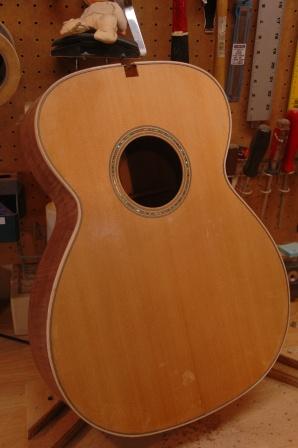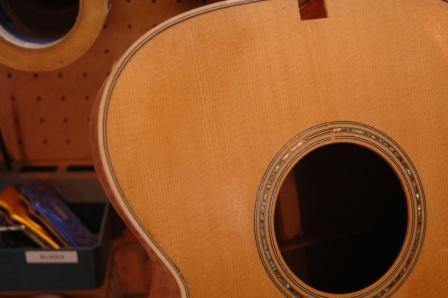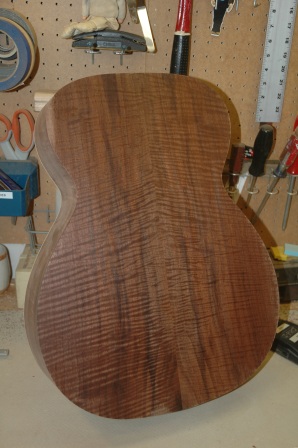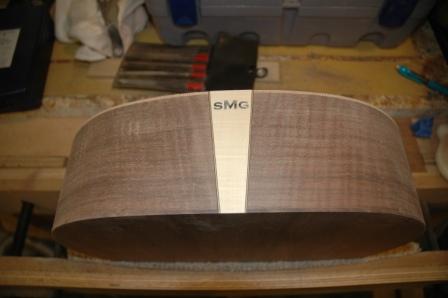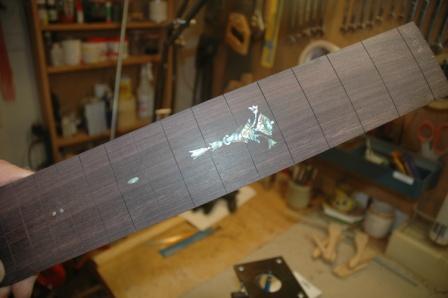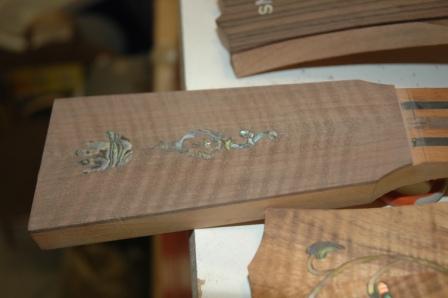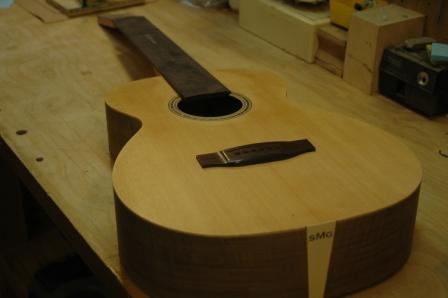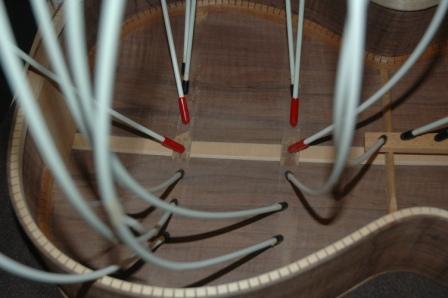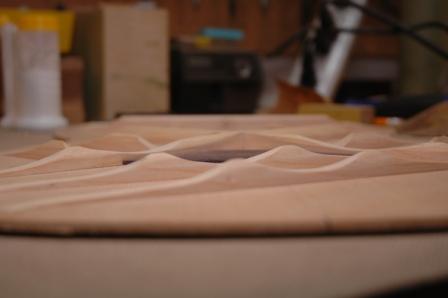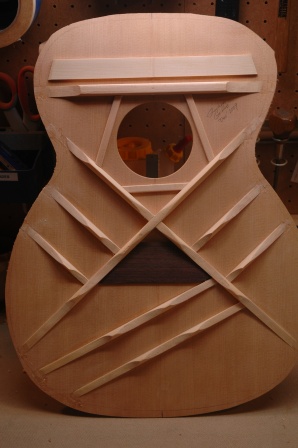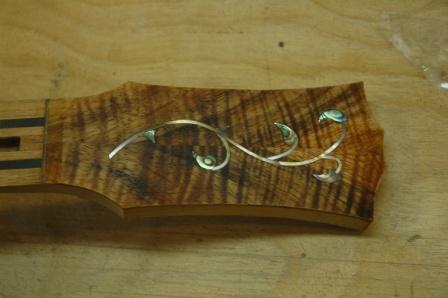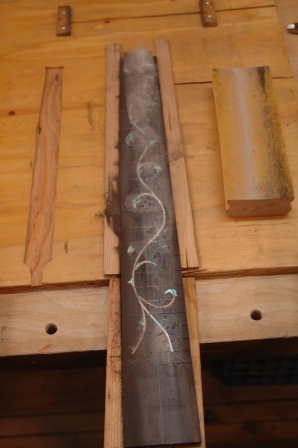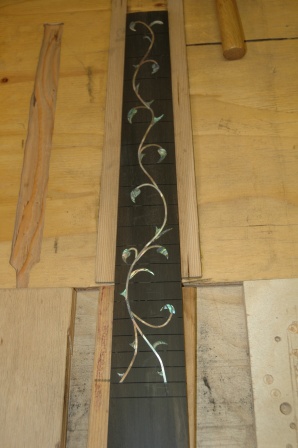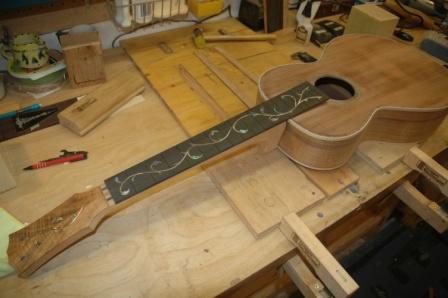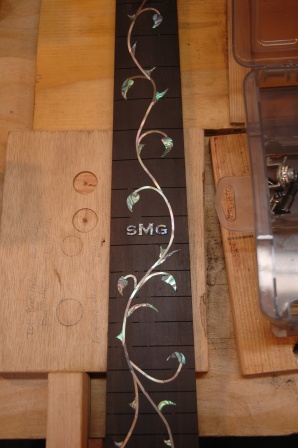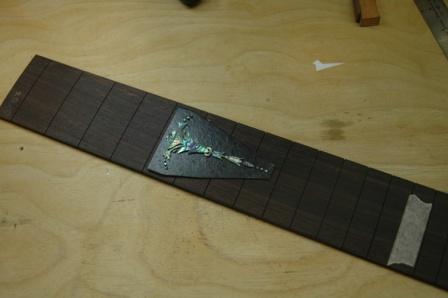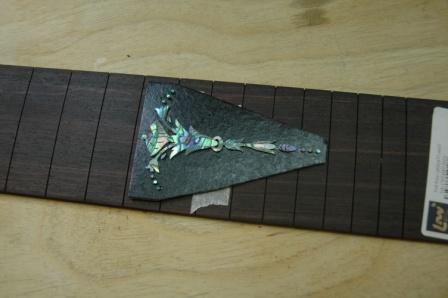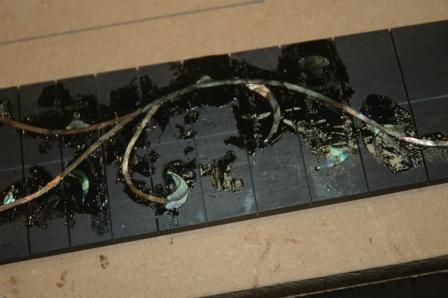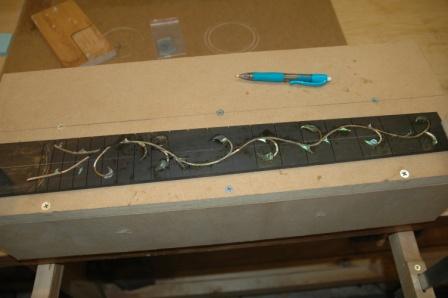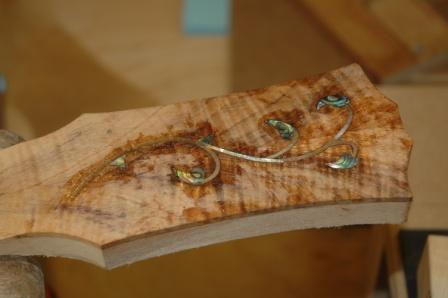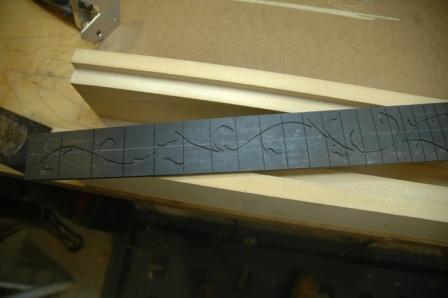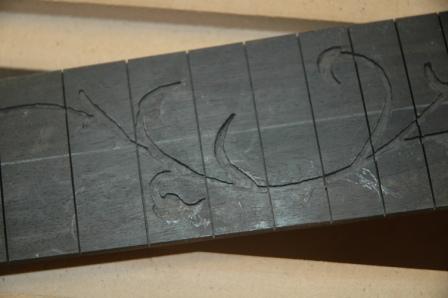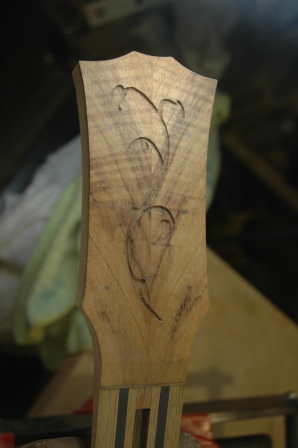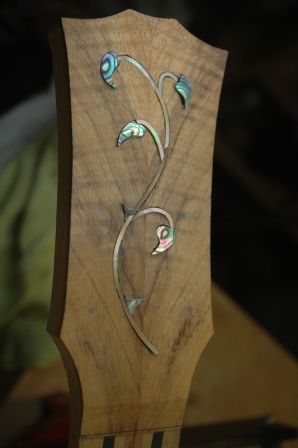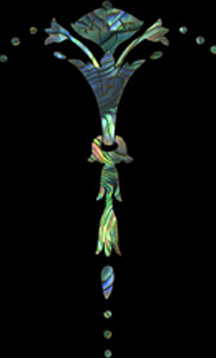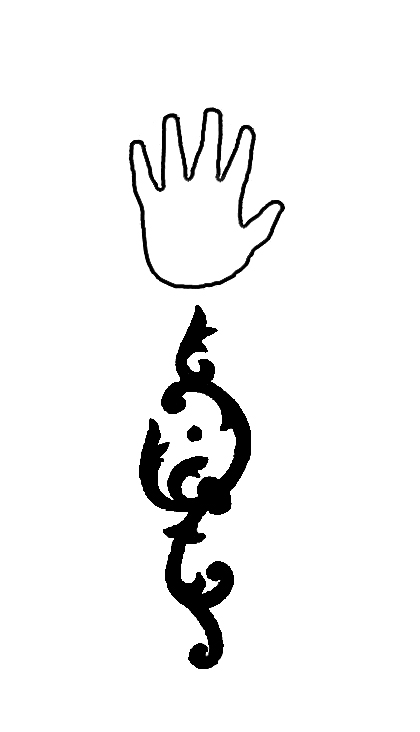December 5, 2009
Today I had the honor of working with Rick Davis on soundboard tuning. Suffice it to say that it is a non documented process with very little scientific evidence that allows one to say what you do or how you do it. The title of this post is as close as one can get to putting it into words. Fundamentally, a guitar top plate joined and thickness sanded down to 0.125″ will have a sound, kind of like a ding ding. A note, or set of notes which ring out and sustain. The counterintuitive piece is you want to eliminate that ding ding and get more of a wobble wobble, a lack of distinct notes. If those distinct notes are left in the soundboard, they will be excited by complementary string notes, and not by others, meaning that notes across the spectrum will be treated unequally resulting in wolf tones, dead tones, and select rich tones.
After the top is braced and preliminary shaping is done, the soundboard still has some ding ding to it, and the removal of bracewood is done until the ding ding turns into wobble wobble. There is a very thin window which goes from wobble wobble to an exploding soundboard: one which will not sustain the tension of a fully strung guitar.
We spent considerable time discussing the function of each brace, and whether their function is structural, tonal, or both. Essentially the braces from the soundhole side of the X-brace toward the neck joint are structural. The X-brace itself from the X toward the butt is both structural and tonal, and the remaining finger braces in the lower bout are purely tonal. Now before I go on, Rick mentioned that everything he says is wrong, but that it works for him. There are a thousand ways to look at soundboard tuning and the understanding of brace shaping and function, but they are all wrong. Which boiled down means; if there was a right way to do it, we would all be doing it. Since there is no right way, there must be all wrong ways.
So, you start with a ding ding braced soundboard, using bracing patterns that are generally accepted, then you start shaping and listening until you just hit wobble wobble. First, preshape the braces into a taper (except where the X-braces join), glue them to the soundboard preferrably using vacuum clamping or go-bar clamping. Next taper the ends, down to nothing for the tone bars, and down to 1/8″ thick for the structural braces. Then scallop all the braces below the X with diminishing peak height toward the sides. All during this process, listen to the tap tone and hear the changes and work toward the wobble wobble.
